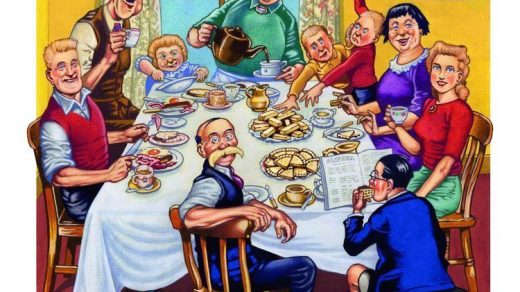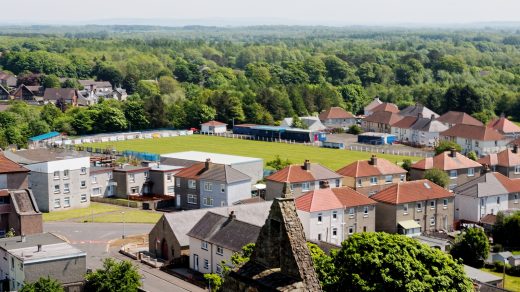Dun Telve (Scottish Gaelic: Dùn Teilbh) is an iron-age broch located about four kilometres (2.5 mi) southeast of the village of Glenelg, Inverness-shire in the Highland Region of Scotland. It is one of the best preserved brochs in Scotland.
Location
Dun Telve (grid reference NG82921726) stands on the north bank of the Abhainn a’ Ghlinne Bhig, in the lower reaches of Gleann Beag. It lies next to the minor road which leads south from Glenelg. The neighbouring broch of Dun Troddan lies 470 metres (1,540 ft) to the east, and the “semi-broch” known as Dun Grugaig is around 2.5 kilometres (1.6 mi) further east.
History
It is thought that the broch was robbed for stone in 1722 (probably for the building of Bernera Barracks in Glenelg). Dun Telve was popular with tourists by the late 18th century, and was first sketched in the late 18th century. It was surveyed in detail in 1871–1873 by Henry Dryden. The building was brought into state care between 1882 and 1901 and the boundary markers that define the area of guardianship are still visible. Around 1914 a programme of works was undertaken by the Office of Works which included “clearing out” the interior, inserting concrete into the upper intramural space and pointing the internal wall-face. The broch has never been archaeologically excavated. The broch is now in the care of Historic Environment Scotland.
Description
View from the south, showing the double-walls
View from the west, showing the entrance Access up the tower is by a winding stone stair, and openings at intervals once gave access to the upper floors. The presence of two horizontal stone ledges, or scarcements, up the height of the surviving section suggests that there were two upper floors. The top floor would have been around nine metres (30 ft) above ground level.
Structures appended to the west and northwest sides of Dun Telve include at least one rectangular building.






Wow amazing blog layout How long have you been blogging for you made blogging look easy The overall look of your web site is magnificent as well as the content
Ive read several just right stuff here Certainly price bookmarking for revisiting I wonder how a lot effort you place to create this kind of great informative website
Thanks I have recently been looking for info about this subject for a while and yours is the greatest I have discovered so far However what in regards to the bottom line Are you certain in regards to the supply